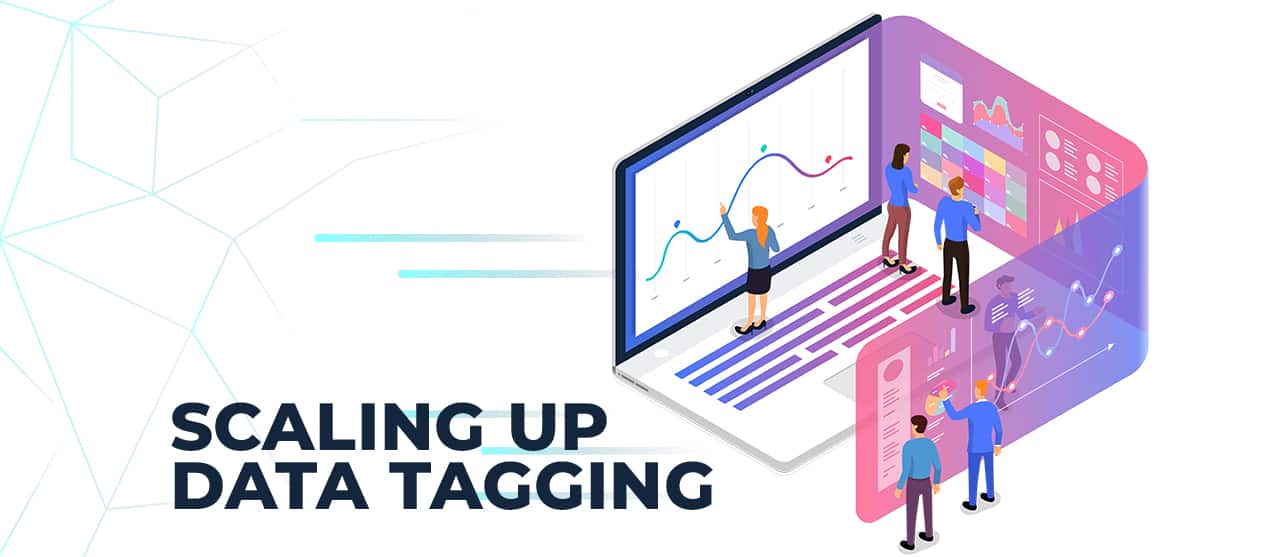
Data tagging is an essential process in machine learning and artificial intelligence projects that involves categorizing data and adding relevant metadata to help algorithms recognize and classify the data. However, as the volume of data increases, the tagging process can become overwhelming, leading to a decline in efficiency and quality.
This is where scaling comes in, the process of increasing the capacity and efficiency of your data tagging process to meet the growing demands of your project. In this post, we’ll delve into why scaling matters in data tagging projects and provide some best practices to ensure quality and efficiency as you scale up.
Why Scaling Matters?
As mentioned earlier, scaling is important in data tagging projects for several reasons. The following are some reasons why scaling matters:
1) Increasing Efficiency:
The volume of data being generated and collected is growing at an exponential rate. In a data tagging project, manually tagging all of this data can quickly become a bottleneck, leading to delays in the project timeline and slower time to market.
By scaling up your data tagging process, you can increase the capacity of your team to handle larger volumes of data, while reducing the time it takes to tag the data. This can be achieved through various methods, such as automating the tagging process using machine learning algorithms or leveraging crowdsourcing platforms to increase the number of people working on the project.
2) Maintaining Quality:
Maintaining high-quality tagged data becomes increasingly difficult as the volume of data grows. The more data you have, the more difficult it becomes to ensure that each piece of data is accurately and consistently tagged. However, maintaining high-quality data is essential for the success of any ML or AI project.
Adopting a consistent and repeatable tagging process is key to ensuring that the quality of your tagged data remains high as you scale up. Standardizing your tagging process, providing clear guidelines and best practices, and ensuring that everyone involved in the tagging process is trained on these guidelines can help maintain consistency and accuracy.
3) Reducing Costs:
As the volume of data grows, the cost of manually tagging all of the data can quickly become prohibitive. However, by leveraging automation and other tools, you can streamline the tagging process and reduce the need for manual labor. This can result in significant cost savings over time.
For example, automated data labeling tools can help reduce the need for manual tagging, while machine learning algorithms can be trained to identify and tag data automatically. Similarly, leveraging crowdsourcing platforms can provide a cost-effective way to scale up the tagging process, as you only pay for the work that is completed.
In conclusion, scaling up your data tagging process is essential for the success of any ML or AI project. It helps increase efficiency, maintain quality, and reduce costs. By adopting best practices such as investing in technology, standardizing your process, using crowdsourcing, monitoring quality, and continuously optimizing, you can ensure that your data tagging process is scalable, efficient, and effective.
Best Practices For Scaling Up Data Tagging
Scaling up data tagging can be a daunting task, but by following best practices, it can be a smoother process that ensures quality and efficiency. Here are some elaborations on the best practices for scaling up data tagging:
1) Invest In Technology:
There are many technological tools available that can assist in scaling up data tagging. Automated data labeling tools and AI-powered tagging systems are two examples of such tools. These tools can help increase efficiency and accuracy while reducing costs.
For instance, an automated data labeling tool can tag a vast amount of data within a short period, while an AI-powered tagging system can assist in identifying patterns and correlations in the data. Investing in such technologies can also ensure that the tagging process remains consistent and standardized.
2) Standardize Your Process:
Standardizing your data tagging process is crucial to ensure quality and consistency as you scale up. To achieve this, clear guidelines and best practices should be created for your tagging team to follow, and everyone should be trained on these guidelines.
It is also essential to establish a standardized format for data tagging to ensure that data is tagged consistently across all projects. When everyone in the team follows the same process, it becomes easier to identify and resolve errors or inconsistencies.
3) Use Crowdsourcing:
Crowdsourcing is an effective way to scale up your data tagging process. By tapping into a global network of workers, you can quickly and efficiently tag large volumes of data, while maintaining quality and consistency.
Crowdsourcing platforms can be used to provide access to a large pool of taggers, who can work on your data tagging project from anywhere in the world. It is essential to set clear guidelines and quality control processes for crowdsourced tagging to ensure that the data is accurately tagged.
4) Monitor Quality:
As you scale up, it’s crucial to monitor the quality of your tagged data. This can be achieved by setting up quality control processes that ensure that your data remains accurate and consistent. You can use a sampling approach to check that the data is accurately tagged and that the tagging process adheres to the established guidelines. Feedback mechanisms can be used to improve the quality of your tagged data over time. When issues are detected, they should be addressed promptly to ensure that data quality is not compromised.
5) Continuously Optimize:
Scaling up is an iterative process, and it is essential to continuously monitor your process and look for opportunities to optimize and improve. You should leverage new technologies as they become available to improve the efficiency and accuracy of your data tagging process.
Refining your guidelines and processes based on feedback from quality control measures can also help improve the quality of your tagged data. Additionally, it is crucial to adapt to changing requirements and data sets, such as changes in data formats, to ensure that your tagging process remains effective.
In conclusion, scaling up data tagging requires a concerted effort to ensure quality and efficiency. By investing in technology, standardizing your process, using crowdsourcing, monitoring quality, and continuously optimizing, you can build a scalable and effective data tagging process.
Following these best practices can help you stay ahead of your data tagging needs, keep your tagging team engaged, and ultimately lead to better results for your machine learning and artificial intelligence projects. With intelligent platforms that help identify and annotate specific data, EnFuse enables businesses to leverage ML and AI. We offer end-to-end tagging and AI/ML enablement solutions to businesses, thus helping them organize and enrich their content. For more details, book a call with us today.
Tags

















Comment